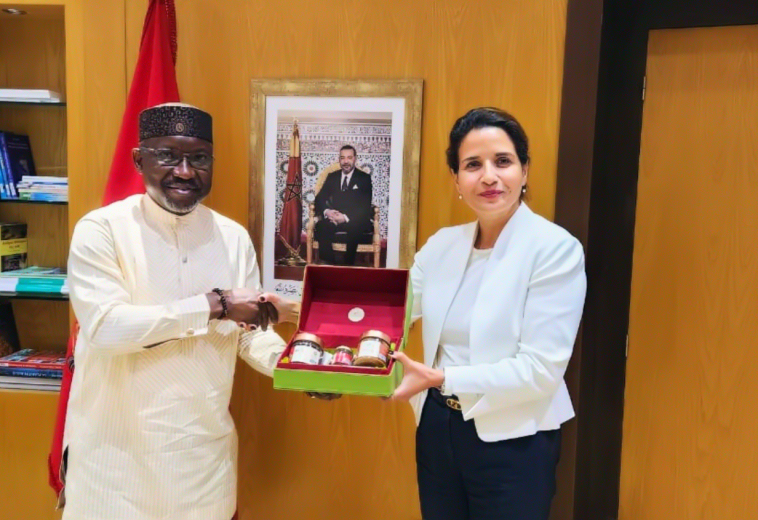The rallying cry for increased female representation in STEM fields has echoed globally, and nowhere is its resonance more critical than in Niger, Chad, and Sudan. These regions grapple with a significant gender gap in STEM disciplines, a challenge that demands attention and innovative solutions. In this exploration, we took a deep dive into the complexities and strides made in advancing the inclusion of girls and women in STEM within the unique contexts of Niger, Chad, and Sudan.
Unravelling Disparities: The Role of Education
A glaring aspect influencing gender representation in STEM is unequal access to education. In Niger, Chad, and Sudan, disparities persist, especially in STEM fields. Shockingly low gross enrollment ratios for women in postsecondary education reveal a stark reality. UNESCO reports a mere 4.5% for women in Chad, 6.2% for men. Niger fares similarly, with 8.6% for men and a mere 4.7% for women. Sudan, while relatively better, still faces challenges, recording 23.8% for girls and 31.1% for boys.
These statistics underline a substantial gender divide in postsecondary education, further exacerbated in STEM fields. The broader issue of gender inequality is exacerbated by limited access to quality STEM education for women.
Challenging Norms: Socio-Cultural Influences
In Niger, Chad, and Sudan, cultural and societal norms significantly shape career choices. Deep-seated stereotypes perpetuating traditional gender roles discourage women from venturing into STEM careers. The belief that women should prioritise family duties over pursuing science or engineering roles contributes to the scarcity of female STEM professionals.
Efforts to challenge these norms are underway. Initiatives like Sudanese Women in Science (SWIS) actively work through conferences, seminars, and media campaigns to debunk stereotypes by showcasing accomplished women in STEM.
Policy Reforms: Driving Change
Recognising the urgency, the governments of Sudan, Chad, and Niger are taking steps towards educational reforms. Niger’s Education for Sustainable Development project, in collaboration with UNESCO, aims to enhance gender equity in schools and elevate the quality of education. Chad’s National Education Development Plan includes measures to enhance girls’ access to quality education.
Sudan, in particular, has initiated scholarship programmes for female STEM students in partnership with foreign organisations, aiming to enhance the educational environment for aspiring female STEM professionals.
Quotas and Affirmative Action: A Path to Parity
To boost the number of women in STEM, Sudan has implemented affirmative action rules in higher education, ensuring minimum representation. Chad has also introduced gender-sensitive regulations under the National Strategy for the Development of the Education Sector to support girls’ interest in STEM.
Champions of Change: Success Stories
Despite the challenges, there are inspiring stories of women breaking barriers in Niger, Chad, and Sudan. Dr. Mariama Keita, a renowned figure in agricultural research in Niger, demonstrates that women can excel in historically male-dominated STEM fields. Her work focuses on increasing crop yields and sustainable farming methods, emphasising the transformative power of education.
In Chad, Dr. Hindou Oumarou Ibrahim, a scientist and environmental activist, connects indigenous knowledge with scientific research to address environmental concerns, providing a beacon of inspiration for young females in STEM.
Dr. Huda El-Sarari, a physicist from Sudan, actively promotes female participation in science and has made significant contributions as a nuclear physicist. Her journey highlights the untapped potential that empowering girls and women in STEM brings to the progress of nations.
Initiatives and International Support
Initiatives like the STEM Girls Chad programme and Sudanese Women in Science (SWIS) actively encourage girls’ interest in STEM through mentorship programmes and educational initiatives. International organisations, including UNESCO and UN Women, play a crucial role by providing resources, financial support, and expertise to local efforts.
Navigating Challenges, Embracing Opportunities
Despite progress, significant obstacles persist, from deeply ingrained cultural norms to political and economic constraints. While funding and infrastructure limitations hinder extensive educational changes, creative responses are possible. Technology, online learning environments, and public-private partnerships can overcome geographical barriers, ensuring STEM education reaches even remote areas.
In Niger, Chad, and Sudan, a concerted effort is needed to increase women’s participation in STEM sectors. Governments and institutions have initiated actions, but more must be done to ensure equal opportunities. By addressing gender biases in learning materials, involving parents, encouraging extracurricular participation, showcasing role models, and fostering private sector partnerships, we can forge a future where girls and women contribute significantly to innovation, social well-being, inclusive growth, and sustainable development through STEM careers.


